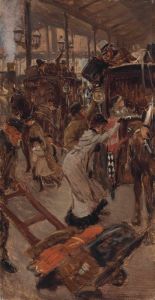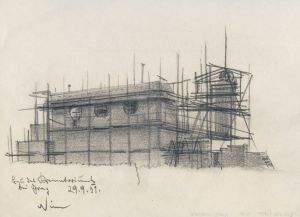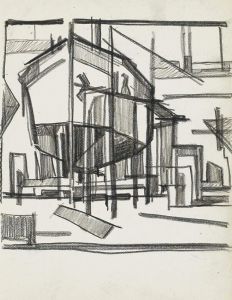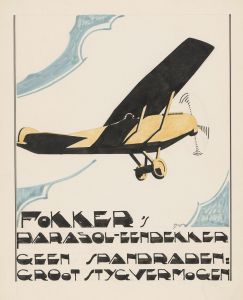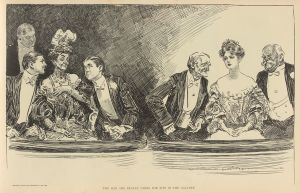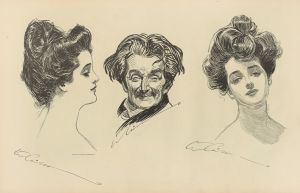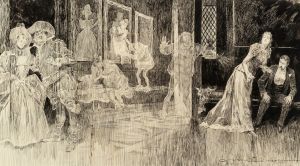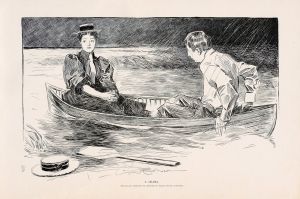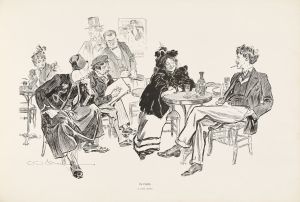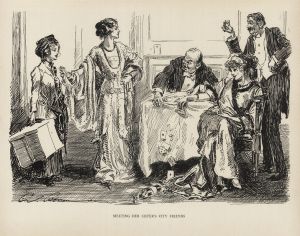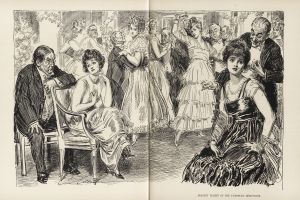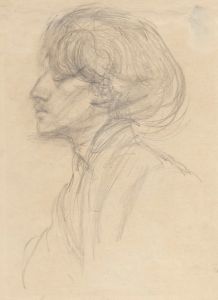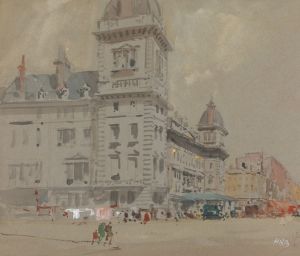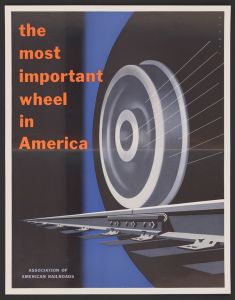
The cable car
A hand-painted replica of Charles Dana Gibson’s masterpiece The cable car, meticulously crafted by professional artists to capture the true essence of the original. Each piece is created with museum-quality canvas and rare mineral pigments, carefully painted by experienced artists with delicate brushstrokes and rich, layered colors to perfectly recreate the texture of the original artwork. Unlike machine-printed reproductions, this hand-painted version brings the painting to life, infused with the artist’s emotions and skill in every stroke. Whether for personal collection or home decoration, it instantly elevates the artistic atmosphere of any space.
Charles Dana Gibson was an influential American illustrator, best known for his creation of the "Gibson Girl," a representation of the idealized American woman at the turn of the 20th century. While Gibson's work primarily focused on illustrations that appeared in magazines such as Life, Harper's Weekly, and Scribner's, he also created a variety of other works that captured the essence of American life during his time.
"The Cable Car" by Charles Dana Gibson is one such illustration that reflects his keen observation of society and his ability to capture everyday scenes with a touch of humor and social commentary. Although specific details about "The Cable Car" are not as widely documented as some of his other works, it is consistent with Gibson's style of using pen and ink to create detailed and expressive images.
Gibson's illustrations often depicted scenes from urban life, and cable cars were a common mode of transportation in American cities during the late 19th and early 20th centuries. They were especially prevalent in cities like San Francisco, where the hilly terrain made cable cars a practical solution for public transportation. In this context, "The Cable Car" likely captures a moment that would have been familiar to many city dwellers of the time.
Gibson's work is characterized by its attention to detail and its ability to convey the nuances of social interactions. His illustrations often included a range of characters, each with distinct expressions and postures that tell a story beyond the immediate scene. This ability to capture the subtleties of human behavior is part of what made Gibson's work so popular and enduring.
While "The Cable Car" may not be as famous as some of Gibson's other illustrations, it fits within his broader body of work that documents and comments on the social dynamics of his era. His illustrations often included themes of class, gender, and the changing social landscape of America, and "The Cable Car" would likely reflect these themes as well.
Gibson's influence extended beyond his illustrations; he played a significant role in shaping American visual culture during his lifetime. The "Gibson Girl" became an iconic image that influenced fashion and societal ideals of femininity. Although "The Cable Car" does not directly contribute to this particular legacy, it is part of the larger tapestry of Gibson's work that provides insight into the everyday life and social fabric of his time.
In summary, while specific details about "The Cable Car" are limited, it can be appreciated as part of Charles Dana Gibson's extensive portfolio that captures the essence of American life in the late 19th and early 20th centuries. His work remains a valuable resource for understanding the cultural and social history of the period.





